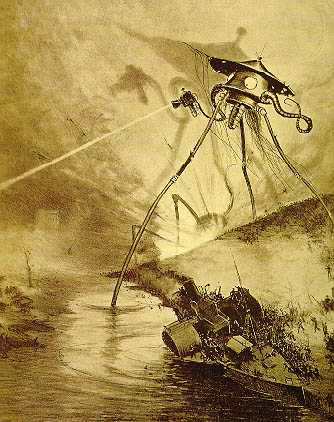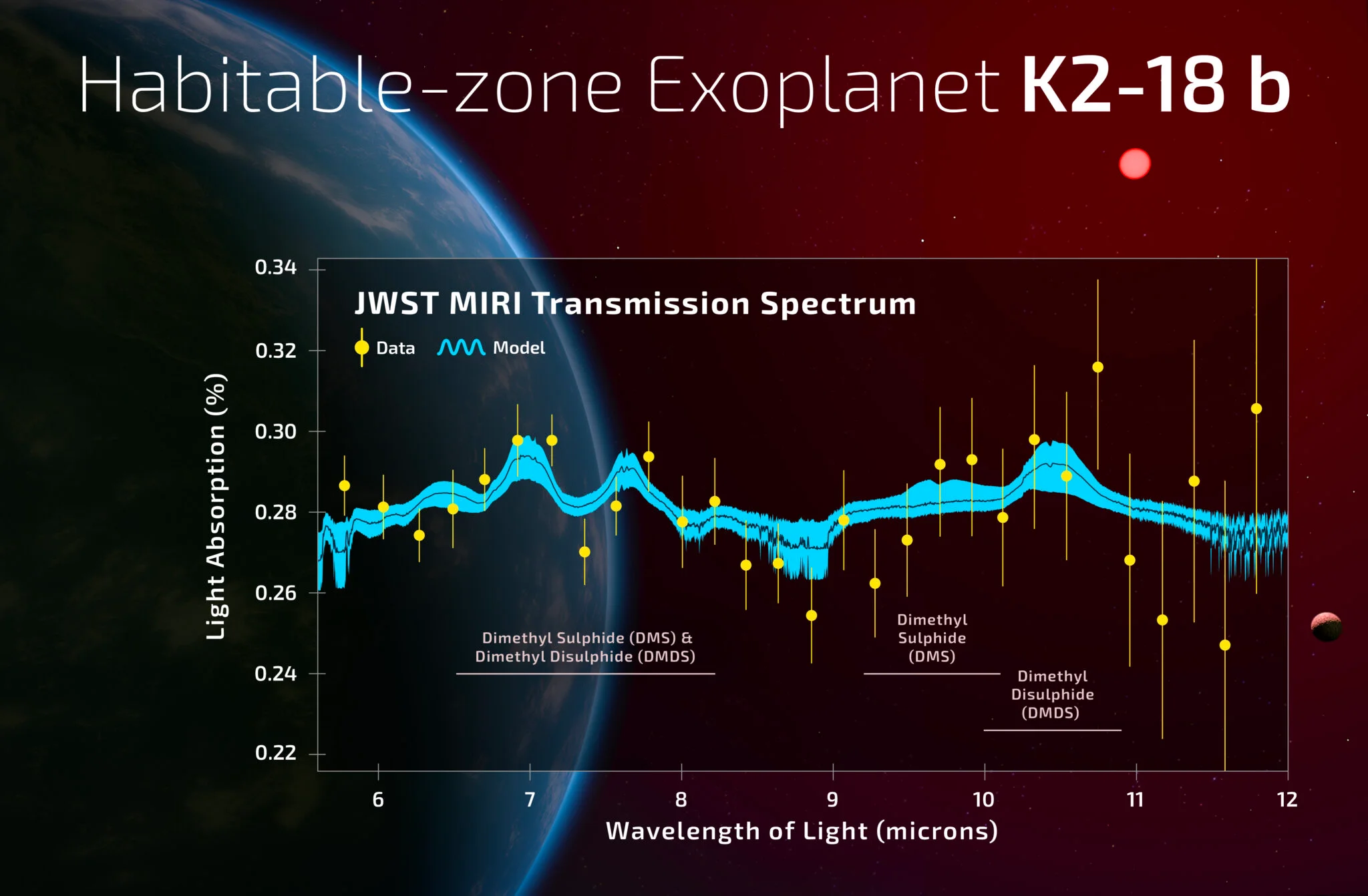
Before we get into the details of the latest discovery, and for that I will be including insights directly from the discovery team themselves, I’ll first give you a bit of background context to explain why the bar is so very high for such claims – basically, we have been here before and have been burned.
Back in 1895, the renowned astronomer Percival Lowell published the exciting discovery of life on Mars. After extensively studying Mars he came up with a detailed description of “non-natural features” on the surface and speculated that these were canals built by a dying civilisation to tap Mars’ polar ice caps, the last source of water on an inexorably drying planet. The public were of course deeply excited by this, but his fellow astronomers … well, not so much.
The problem the scientific community had was replication – only Lowell could see these canals, nobody else could.
In 1909 the sixty-inch Mount Wilson Observatory became available and revealed … (drum roll here) … yep, no canals.
A more recent example of discoveries of “life out there” includes the infamous (and deeply dubious) face on Mars claim. Many were excited by it, and yes, that turned out to not be a face at all when we got far better high resolution images. On a more serious note that was also the more recent detection of life in the upper cloud layers of Venus, but once again no.
In essence – something really interesting gets detected, then when we dig a bit deeper, so far it has been either inconclusive or just wrong.
Rinse and repeat.
Is this latest discovery more of the same or is it different this time?
Did the James Webb Space Telescope find evidence of a biosignature on another world?
Right now the best available answer is “perhaps”, but it is still very debatable.
On April 17, a paper titled “New Constraints on DMS and DMDS in the Atmosphere of K2-18 b from JWST MIRI” was published in The Astrophysical Journal Letters.
First the basics. K2-18 b is an exoplanet in orbit around a red dwarf star that is 124 light-years away. It is about 8.6 times heavier than earth, and a radius of about 2.6 earth radii.
K2-18 b is thought to be possibly what is termed a hycean world – The word “hycean” comes from “hydrogen“ and “ocean“ — meaning it’s a planet covered by oceans and has a nice puffy atmosphere full of hydrogen.
In recent years such exoplanets have been specifically selected for a deeper investigation. This is because these are thought to be candidates where we have a good shot at finding evidence of life. In fact they already knew that K2-18 b was a really good candidate, that’s why it was studied.
Now for some initial caution.
There is some debate – is K2-18 b really hycean (“hydrogen“ atmosphere on an ocean world). The reason for that debate is that it also has a lot of methane in the atmosphere, far more than is possible for a true hycean world to sustain without life producing it in the quantities measured.
The alternative is that it could be a mini Neptune (gas all the way down and not a hycean world at all) and so that methane is natural.
OK, let’s dig into what has just been published.
How can you possibly look that far (124 light years) and detect what is in the atmosphere?
What they did was to use what is called transit spectroscopy. What that basically means is that they use the James Webb Space Telescope (JWST) as the planet transits in front of it’s nice bright host star. Because the planet has a nice thick atmosphere, some of the starlight passes through that puffy atmosphere on its way to us. The atmosphere itself will absorb some of that starlight, so they can then compare the light from the star when the planet is not in front of the star with the light when it is, and use that different to work out what the atmosphere contains.
Two years ago in 2023 this same team reported a very tentative detection of DMS (dimethyl sulfide).
For this latest study they looked again in a different wavelength. This time the evidence for DMS is far stronger. The level of confidence that either DMS or DMDS (or both) is there is sigma 3, and also the quantities of DMS and/or DMDS detected is rather large.
Why is detecting large amounts of DMS and DMDS significant?
Dimethyl sulfide (DMS) and also a related molecule, dimethyl disulfide (DMDS) in such large quantities are generally considered to be a very robust evidence of life. On earth, the only way for those molecules to be generated is via tiny ocean organisms like phytoplankton.
Caution is wholly appropriate.
The published paper is very very careful with the precise wording used…
(regarding an earlier 2023 observation)…The observations also provided a tentative hint of dimethyl sulfide (DMS), a possible biosignature gas, but the inference was of low statistical significance…
(regarding this latest study) … We report new independent evidence for DMS and/or DMDS in the atmosphere at 3-σ significance, with high abundance (≳10 ppmv) of at least one of the two molecules. More observations are needed to increase the robustness of the findings and resolve the degeneracy between DMS and DMDS. The results also highlight the need for additional experimental and theoretical work to determine accurate cross sections of important biosignature gases and identify potential abiotic sources. We discuss the implications of the present findings for the possibility of biological activity on K2-18 b.
Here is an illustration of the detection …

Here is the discovery being explained by the discovery team lead …
- What is fascinating here is that they explain exactly how they did this
They are confident about their results and have looked at different ways of processing the data. Each time the signal persists, but they do also recognise that it needs to be more robust.
The key question is of course the big one – have they found life on another planet?
If asked, then you will discover that their stance is “no”.
The detection they have made is indeed very interesting, but from their viewpoint it is not good enough to consider it to be robust … yet. They need to do more observations.
The detection is at a statistical 3-sigma level of confidence – the gold standard for a scientific discovery is 5-sigma, and they are not there yet.
The other very real possibility they recognise is that while DMS in the quantities detected is considered to be a robust bio signature, there is still the possibility that there exists a non-life chemical process that could also produce DMS at the levels they are seeing in the atmosphere of this hycean world. That also needs to be researched in both theory and in practice in a lab.
Caution Notes:
- Have they really detected DMS and DMDS is the quantities they claim? – This is still debatable
- Is DMS and/or DMDS in such quantities a robust bio signature? – This also is debatable
Bottom Line: Right now, you should be excited, not just about the possibility of life on another world, but that the JWST is capable of doing such a detection – that alone is a truly revolutionary moment. Remember, this is an exoplanet in orbit around a star that is 124 light-years away.
Are we alone?
We live in a galaxy that has between 100 to 400 billion stars in it. To translate that a bit, it is estimated that there are 300 million Earth-like planets in our Milky Way galaxy. If indeed life like us is a 1 in 1 million shot then such vast numbers spread over deep time means that highly improbable things are a certainty.
But wait, that’s just our one galaxy. The estimate of the number of other galaxies in the observable universe is that there are over 2 trillion out there, and that is just the part we can see. Beyond what can be observed there could be many many more, so many more that we just can’t wrap out heads around how many more.
Feeling small yet?
If asked “Are we alone?“, I’d personally lean in the direction of “probably not“, but right now we just do not know.
I rather like this quote.
“Two possibilities exist: either we are alone in the Universe or we are not. Both are equally terrifying.”
Commonly attributed to Arthur C. Clarke … but I can’t find anything to confirm that he really did say it (sort of like life out there – we don’t truly know)
If asked, “are we alone“, then what do you think?